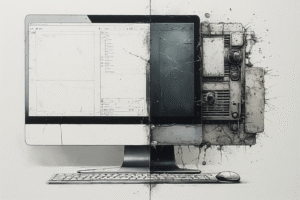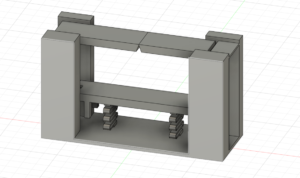Depending on who you ask, working with clients can range from a series of essential interactions to get the job done, to something more akin to dealing with someone who has the basic understanding and emotional intelligence of a sugar-fueled toddler. While the worse of the two scenarios is definitely the exception rather than the rule, even the simple act of communicating needs and receiving important information can come with its own set of challenges. Adding another layer to the challenge is approaching these conversations with maturity and respect—even when they seriously test your patience. After wrapping up the back-and-forths, the information requests, and the explanations of key concepts, you’re glad you kept your cool and preserved the professional relationship. But every designer has those lingering gripes—the thoughts they wish they could share with clients, even if only to genuinely help them understand the things that could make the whole project run more smoothly. So, whether you’re here to add to your own list of gripes or simply nod along in agreement, here are six things every designer secretly wishes they could tell their clients.
Before we dive in, it’s important to acknowledge that while there are definitely things we wish we could say to clients, they remain a vital part of the design process. After all, without clients, there’d be no one for designers and engineers to provide services for. Keeping them happy is part of the job. Clients bring valuable insights and deep knowledge of their industries, and it’s crucial to truly listen—otherwise, you risk becoming an out-of-touch designer. In my mostly industrial experience, I’ve been fortunate that the majority of my interactions with clients have been positive—but that doesn’t mean a few outliers haven’t slipped through. Despite our best efforts, we all aim to deliver work that meets, if not exceeds, client expectations. After all, I’ve yet to meet a designer or engineer who intentionally sets out to hand over subpar deliverables.
Your Responsiveness (or lack there of) Heavily Impacts the Project Schedule
While it goes without saying that communication with the client is crucial, the frequency and timing of those interactions can greatly influence the project’s timeline. When information is delivered promptly, it empowers designers to work more efficiently and confidently, knowing they’re on track to deliver the quality the client deserves. But when updates trickle in slowly or arrive all at once, that’s when delays start to pile up. As the recipients of the project criteria, designers aren’t exposed to the day-to-day conditions that will impact the functionality of the design. So, what may seem obvious to the client often isn’t as clear from the designer’s perspective. To allow the designers to get up to speed is to have a reliable flow of information when they require it. This can be easier said than done. Designers often encounter situations where newly uncovered information sends the project to differing possible solutions depending on what direction would be favored by the client. These kinds of diverging solutions happen often, varying from micro decisions to being substantial requirements for information that alters expectations. Now imagine how the speed—or lack thereof—of communication impacts all of this. Getting clear instructions within a day is ideal, but more often, you won’t hear back for several days. In worse cases, it might take weeks. I remember working on a project where crucial pieces of information were needed, and to this day, they still haven’t been addressed. It’s incredibly stressful having to guess what the client wants, deliver something on a tight deadline, and just hope you got it right. And when those missing pieces are essential for the project to move forward, everything grinds to a halt. What makes it worse is when a client delays in providing key info but still expects the original timeline to stay the same—an expectation that’s not just unrealistic, but incredibly frustrating.
Another downside of slow information delivery is the growing doubt about whether the feedback you’re getting is actually useful. You might find yourself questioning if the client truly read your comments and responded thoughtfully—or if they skimmed over everything, gave a half-hearted reply, and then circled back later to challenge a design they technically already approved.
Your Company Organizational System Affects the Flow of the Process
The ease—or struggle—of a project’s progress often traces back to the people you’re communicating with and, more importantly, their company’s organizational system. Whether their data is cleanly structured in an efficient database or so chaotic it makes a tangled Slinky look like a pristine Kanban board, problems can arise at either extreme if things tip too far in one direction. On the disorganized end of the spectrum, working in chaos often leads to wasted time trying to piece together fragmented information—and worse, the risk of acting on outdated or incorrect data that their manager of information never got around to updating. A major source of frustration for designers is trying to navigate a client’s poorly defined drafting standards. These standards are a critical part of the project deliverables and serve as the foundation for how everything is ultimately presented. Spending excessive time managing incomplete standardization documents and relying on constant back-and-forth with the client representative is a clear sign of how little priority their company places on proper documentation. In some cases, things are so poorly managed that even the representative doesn’t know the answers—or worse, doesn’t care. That is, until it’s time to review the deliverables, when suddenly, document standards and presentation become their highest priority.
Another common pain point is the inconsistent—or complete lack of—updating key information within a company’s internal systems. When changes are made to a facility, the related scope documents and design drawings should be properly recorded for future use. If they aren’t documented correctly—or at all—they might as well not exist. For engineers and designers working on new projects in that same facility, access to accurate records is essential for properly applying the new design. Without organized documentation, you may find yourself requesting dozens of drawings and files, only to confirm that none contain the critical information you need. And surprisingly, this kind of disorganization can directly lead to extended budgeting issues. I once worked on a project where we presented the client with several design options. The simplest and most logical choice required just one specific piece of information to confirm an existing feature—information the client definitely had, but couldn’t locate. As a result, we were forced to go with a more complex and expensive option simply because a basic feature wasn’t properly documented, and we couldn’t confirm that the more cost-effective solution would work.
On the opposite end of the spectrum, an overly rigid organizational system can become so bureaucratic that it forces you to navigate highly specific processes through tightly controlled channels—knowing full well that everyone else involved is doing the same, all while valuable time slips away. While this system provides a trail for many people to cover themselves if issues arise can give a sense of false security since the sheer act of navigating so many interwoven threads across multiple projects possibly causes important details to get lost in translation. At times, this can cause clients to make mistakes like approving unrelated projects within the same areas, leading to scope conflicts that can result in smaller, less significant projects causing costly and disruptive changes to larger projects in the same space. If this can happen in well organized systems, then it can be catastrophic for the less organized clients. So, if you know your organizational skills could be worked on, or be laxed, then please put some effort into making some changes to how everything is structured.
Your ‘Non Negotiables’ can Lead to an Undesired Product
For any project scope, it is the client’s responsibility to provide the foundational guidelines and rationale. However, challenges can emerge when clients regard their decisions as final and resist outside input. In more difficult situations, their non-negotiable demands may contradict sound judgment or practical considerations, even when efforts are made to align them with professional advice. While clients do possess valuable insights into their operations, excessive familiarity can sometimes breed complacency—leading to assumptions like, ‘this under-engineered solution should work, based on my experience.’ While experience is undoubtedly valuable, external, specialized reviews are essential to ensure that designs meet established codes and standards. When a client refuses to reconsider a decision that conflicts with the judgment of engineers or designers, it can become the tipping point—the first domino in a chain reaction that may lead to significant issues as the project progresses.
I remember a good example of a situation like this when we were tasked with designing a foundation for a client. Typically, we would verify the acting stresses ourselves, but in this case, the client insisted on providing their own stress values and instructed us to use them for the design. As it turned out, the stresses they provided were inaccurate for the conditions at hand. However, despite our concerns and attempts to address the issue, the client made it clear that we were to use only their figures, with no room for deviation. As a result, the foundation had to be significantly oversized for its intended purpose, and ironically, we received backlash from the client for the outcome—despite it being a direct result of their own directive.
There have been times when these kinds of decisions only come to light at the end of a project—when you’re reviewing the completed construction and noticing some of the questionable modifications clients have made to the original design. On several occasions, I’ve been responsible for verifying that the final build aligns with the approved plans, only to discover that key structural elements were omitted entirely. While minor on-site adjustments to accommodate conditions are both expected and appreciated, being too lenient with client-led changes can sometimes encourage them to take excessive liberties, testing the boundaries of what they can alter without proper oversight.
Your Major Changes Mid-project will Require Time and Money to Incorporate
It would be ideal if projects were shielded from excessive mid-project changes, but in reality, that level of stability is rare. The most challenging situations arise when substantial additions or major revisions are requested for portions of the project that are already partially designed. While clients typically understand that such changes come with added time and cost, there are rare and frustrating instances where they expect these adjustments to be absorbed within the existing project budget—an expectation that is bordering upon unrealistic. Beyond the financial and scheduling impacts, these unexpected changes can undermine the core concepts of the original design. In some complicated cases, the initial approach was selected because it was the only viable or practical solution to a complex problem. A client’s proposed change might appear reasonable at first glance, but due to existing site constraints or limited infrastructure, even modest alterations may exceed allowable tolerances and stresses, which can force engineers and designers to abandon established plans entirely and return to the drawing board. Of course, when these situations take a turn of reworking things from the ground up, some of the more unreasonable clients begin expecting the previous conditions to still apply to anything moving forward.
One particularly frustrating aspect of this process is that, while changes inevitably demand additional resources, they also tend to cause significant frustration among designers and engineers. At the outset of a project, kickoff meetings and planning sessions are held to ensure that both the client and the project team have a shared understanding of the project’s initial criteria. Ideally, this is the stage where the client thoroughly reviews their needs, guidelines, and requirements—consulting with the relevant personnel within their organization who are directly involved in the operation of the affected area. The goal is to provide as much accurate information as possible to the design team. Of course, no process is perfect, and it’s reasonable to expect some new information to emerge as the project develops. However, when major changes are introduced mid-project, it often leaves the contractors questioning whether the client truly conducted the necessary due diligence at the beginning—specifically, whether they took the time to properly assess their facilities and clearly define what the project actually needed to include.
Whatever the reason may be, engineers and designers always hope that clients understand one key principle: the fewer changes made during a project, the better.
Giving us an Impossible Task does not Benefit Anyone
Designers and engineers are drawn to their work because they enjoy tackling complex problems that come with a reasonable and solvable set of challenges. However, when a project is repeatedly turned down by multiple contractors, it often signals that the problem itself needs to be reconsidered. These so-called “problem projects” can earn that label for various reasons—such as an overly ambitious scope paired with an unrealistic budget, difficult site conditions, or attempts to force construction into a space that simply can’t accommodate it without excessive cost, effort, or compromise. In my experience, a common root cause of such issues is the continual deferral of necessary work. When the scope of deliverables is postponed year after year, the situation often deteriorates to the point where immediate action is finally required. What could have been a manageable project if addressed early becomes far more complicated and costly due to the accumulation of damage or operational impact over time.
You Hired us for our Expertise, so Place Some Trust in us
Above all, a reputable engineering firm relies on its experienced team of engineers and designers to lead projects with integrity and technical expertise. These professionals aren’t just fulfilling a job—they’re engaged in the work because they genuinely enjoy the challenge of solving complex problems and delivering practical, effective solutions. At their core, they are problem solvers. When they push back on client requests, it’s not out of resistance, but out of a responsibility to be transparent and to balance the client’s goals with what is technically feasible and sustainable. Their role is to deliver a solution that aligns as closely as possible with the client’s vision, while still adhering to the constraints of engineering principles. And if that’s not reason enough to trust their judgment, it’s worth remembering that they are also bound by industry codes and construction safety standards—frameworks specifically designed to minimize future risks for the client and stakeholders, ensuring the long-term success of the project. So, when engineers or designers raise concerns or propose alternatives, it isn’t to be difficult or dismissive—it’s to protect the integrity of the project and act in your best interest. Ideally, from the client’s perspective, they won’t find themselves in situations where an engineering firm completely mishandles a project, resulting in significant setbacks and frustration for all parties involved. While such cases do make headlines from time to time, they are the exceptions—not the norm—among the thousands of successfully executed projects happening at any given moment. So, it is relatively safe to give your trust into the company that is performing the work for you, but it’s understandable if you still want to do your own due diligence along side them.
Conclusion
We hope this has provided some insight into the mindset of designers and engineers when navigating pushback from clients. Perhaps some of these points resonated with you, or maybe there are still concerns and experiences that haven’t been addressed. If you have thoughts to add or perspectives to share, we encourage you to leave a comment and join the conversation!






